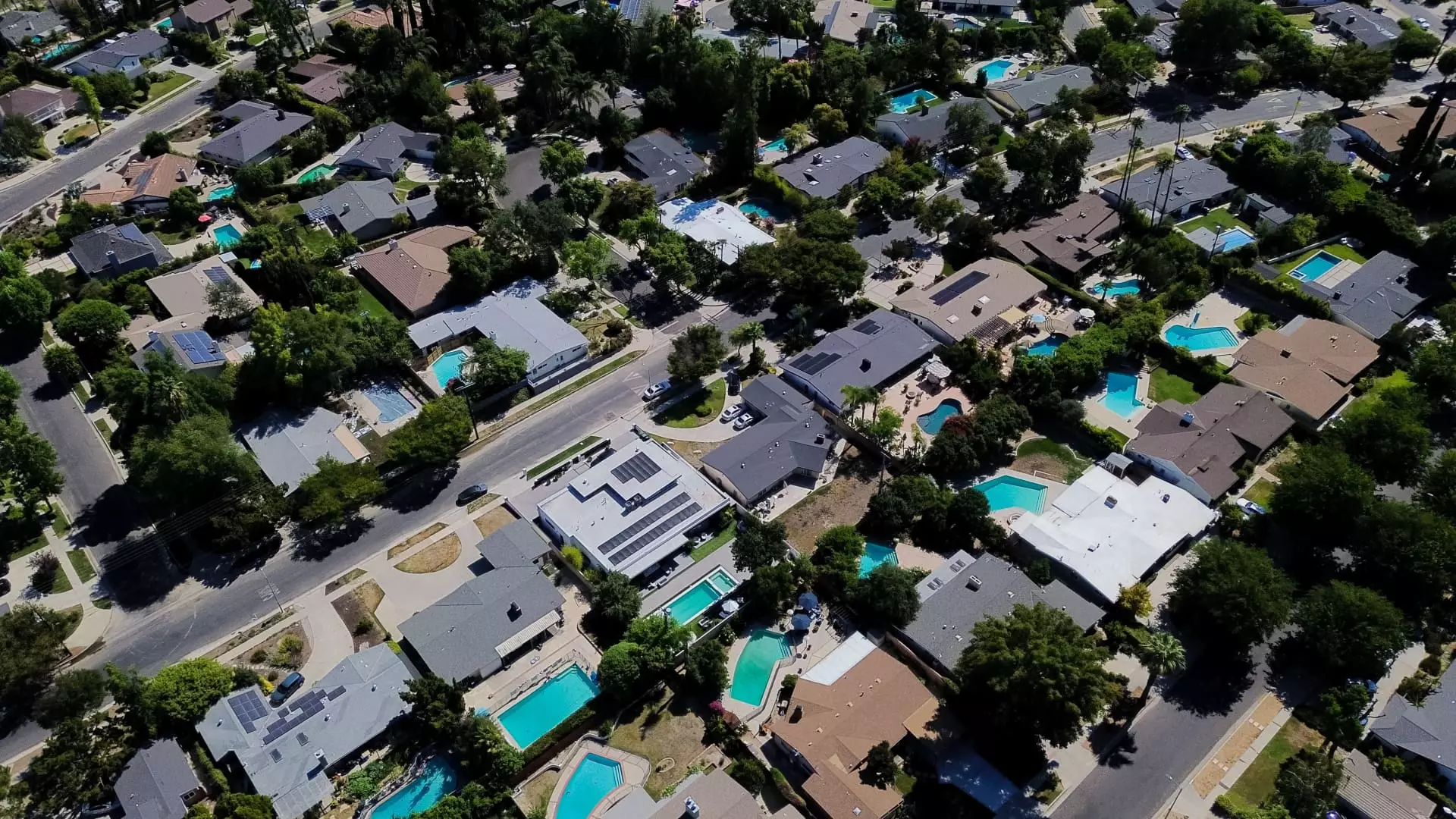The recent decline in existing home sales, registering a sharp 2.7% drop to just 3.93 million units in June—far exceeding analysts’ expectations—raises an unsettling alarm about the health of the housing market. While some might dismiss this as a temporary pause caused by rate fluctuations, the reality is far more complex. The persistence of high mortgage rates, stubbornly hovering around 6.77%, acts as a chokehold on prospective buyers, especially first-timers who bear the brunt of affordability crises. These figures expose a fragile market that, despite signs of supply increase, remains incapable of rallying from the underlying economic headwinds.
The media often presents these figures as cyclical hiccups, but beneath the surface lies a structural imbalance that threatens long-term stability. A supply increase of nearly 16% year-over-year sounds promising—yet, with only 4.7 months of inventory, a stark undersupply persists. This persistent scarcity fuels record-high prices, impeding first-time homeownership and skewing the market toward affluent sellers. Fundamentally, the market’s nervousness is compounded by the resilience of mortgage rates, which refuse to decline and thus continue to restrict demand. The supposed recovery remains superficial, masking a hollowing out of affordability for the average American.
Median Prices and Wealth Inequality: A Disturbing Divide
The median home price reaching $435,300—a 2% annual increase and a record high for June—confirms the uneven nature of the housing landscape. This trend, maintained for over two years, reflects an environment where escalating home prices are disconnected from the average wage growth. The formation of a widening wealth gap is evident, with high-end sales surging by 14% and homes priced above $1 million enjoying faster sales—yet homes under $100,000 are down 5%. This polarization illustrates a troubling trend: wealth is consolidating at the top, leaving middle and lower-income Americans increasingly marginalized.
This divergence signals more than just a market anomaly; it hints at a fundamental socioeconomic shift that could undermine the fabric of smaller communities. As wealthy buyers continue to dominate high-end transactions, the traditional American dream of homeownership becomes yet another victim of inflationary pressures and economic inequality. Meanwhile, the lagging construction activity—failing to meet even modest population growth—exacerbates this divide. It’s no wonder affordability continues to decline, especially for first-time buyers who now represent only 30% of transactions—a figure far below historical norms.
The Denial of Reality: Constructing a False Narrative of Prosperity
The narrative pushed by some analysts and market observers is that a supply rebound or minor rate reductions could quickly turn the tide. This is a dangerous oversimplification. If mortgage rates were to fall modestly to 6%, as some suggest, the predicted 160,000 additional first-time buyers might materialize. But such optimistic scenarios ignore the deeper structural issues: rising home prices, financial market volatility, and an economy that remains uncertain. The current supply levels, while seemingly improving, still fall short of a balanced market, indicating that a true recovery remains elusive.
Furthermore, the market’s resilience—manifested by the average of 2.4 offers per listing—is increasingly a reflection of scarcity-driven desperation rather than genuine demand. First-time buyers, constrained by high costs, are unable to compete effectively, and the proportion of cash deals remains high, indicating that wealthier investors, rather than average families, dominate the scene. This preference for cash transactions hints at a broader trend: liquidity is concentrated in the hands of the well-connected, leaving others on the margins. The market isn’t signaling a healthy rebound; it’s unveiling deeper vulnerabilities rooted in economic disparities and policy failures.
A Future Marred by Contradictions and Challenges
Looking ahead, the climate appears bleak for those hoping for a robust, inclusive housing market. The issue is not solely about interest rates or supply but about the broader economic policies and market signals that have long favored the wealthy over the common buyer. Without decisive intervention—either through policy moves to reduce mortgage costs or increased focus on affordable construction—the current trajectory threatens to entrench inequality further. The conspicuous rise in wealth among existing homeowners over the past five years underscores this divide.
The reality is stark: the housing market, long seen as a pillar of economic stability, is now riddled with contradictions. While prices skyrockets and supply inches upward, genuine accessibility remains elusive. The problem isn’t simply cyclical; it’s systemic. If policymakers and industry stakeholders continue to ignore these nuances, the consequences will be not only economic but social, fracturing communities and undermining the very foundation of homeownership in America.

